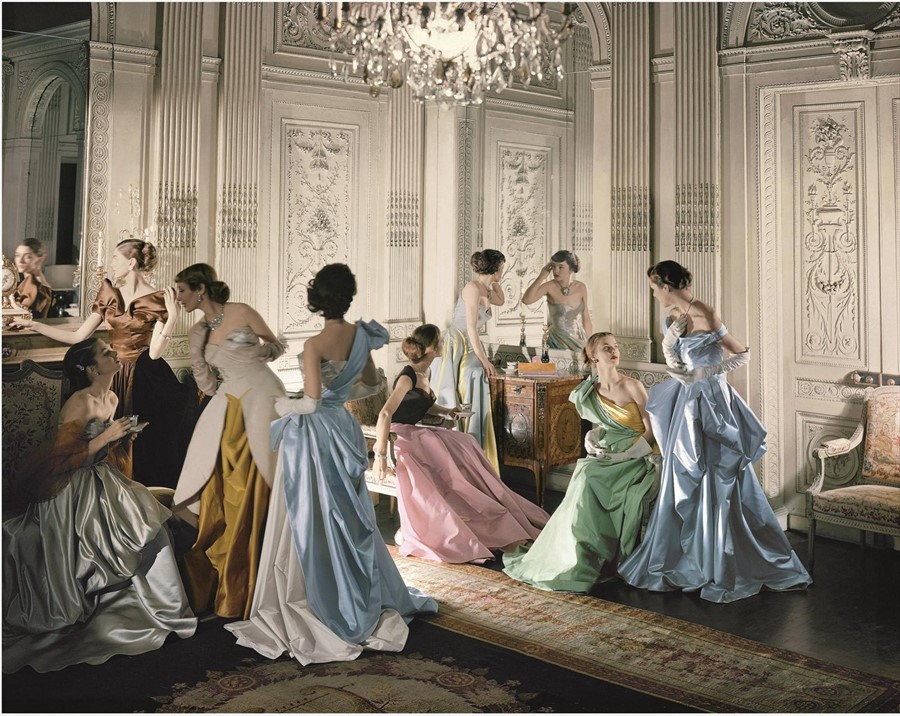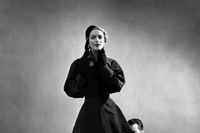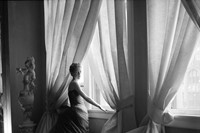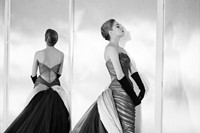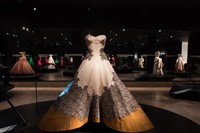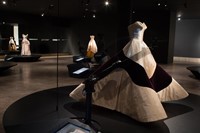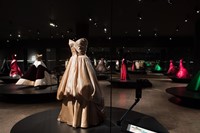Ten unexpected facts about the extraordinary if neglected couturier Charles James, the star of the new show at the Anna Wintour Costume Centre
Charles James remains largely unknown, despite the fact that his influence is everywhere, to be found in wrap dresses, nipped-in waists, voluminous skirts and eiderdown jackets. Dior cited him as the inspiration for his revolutionary New Look, and his sumptuous, evocative ballgowns and tailoring dressed the likes of Millicent Rogers, Marlene Dietrich, Babe Paley and Diana Vreeland, who supported him throughout his career. He was renowned for his fearsome temper and was often notoriously difficult to work with. However his pioneering and inventive designs leave no doubt of his creative genius and influence, as he redefined silhouettes and dressmaking throughout the 1940s and 50s, blending the worlds of surrealism and haute couture.
His retrospective exhibition, Charles James: Beyond Fashion opens today at the Costume Institute at the Metropolitan Museum of Art, which has been rechristened the Anna Wintour Costume Centre. This week also confirmed the relaunch of the Charles James design house, funded by Miramax co-founder Harvey Weinstein and his wife, Marchesa's Georgina Chapman. To celebrate, we present ten facts on the legendary couturier, tracing his journey from a troubled society dandy to one of the world’s most significant and outstanding designers.
1. No Training
James had no formal training. In his early years, he even attempted suicide due to the misery caused by being an outcast in his affluent family’s social circle. His father was a military captain and disapproved of his openly homosexual leanings and flamboyant profession. In an attempt to make an industrialist of his son, his father arranged a job for him at Commonwealth Edison in Chicago in 1924. However James quit within a year, using his inheritance to launch a small millinery business, which was the first step of his career.
2. The Taxi Dress
Pre-Diane Von Furstenberg’s take on the iconic silhouette, the wrap dress was created by Charles James, under the name of the Taxi Dress. Designed in 1931, it was a revolutionary style amidst the tubular flapper dresses of the period and so-called due to the ease at which it could be put on or taken off in a taxi. One of the first women to endorse the trend was Mrs St John (Mary Barnes) Hutchison who described it as “symmetrical, diabolical and geometrically perfect.”
3. The Infinity Scarf
James created the now common style of a neck scarf that is sewn together as one loop, thus having no ends. Created in 1935, it was originally referred to as the Loop-a-Loop, a ring of twisted fabric designed to be linked to another and worn as a pair. It became one of his strongest selling designs for two decades.

4. The Puffa Jacket
Known more formally as a quilted eiderdown jacket, James produced the first of its kind in 1938. Originally conceived by James as “a technical challenge and a fantasy,” it was photographed for Harpers Bazaar and admired by Salvador Dalí, who referred to it as a ‘soft sculpture.’
5. Metal Zips
While Schiaparelli often takes credit for exposing the metal zip within fashion, it was Charles James who originally started using these in 1935. He collaborated with Lightning Fasteners Ltd to create a version of the taxi dress with a spiraling zipper and began descreetly placing them on his garments.
6. The Umbrella Dress
This black silk-faille gown was given its name due to the underpinnings of the skirt, which were reminiscent of umbrella spokes. It was one of the first strapless dresses and also an example of Charles’ inventive manipulation of fabrics.
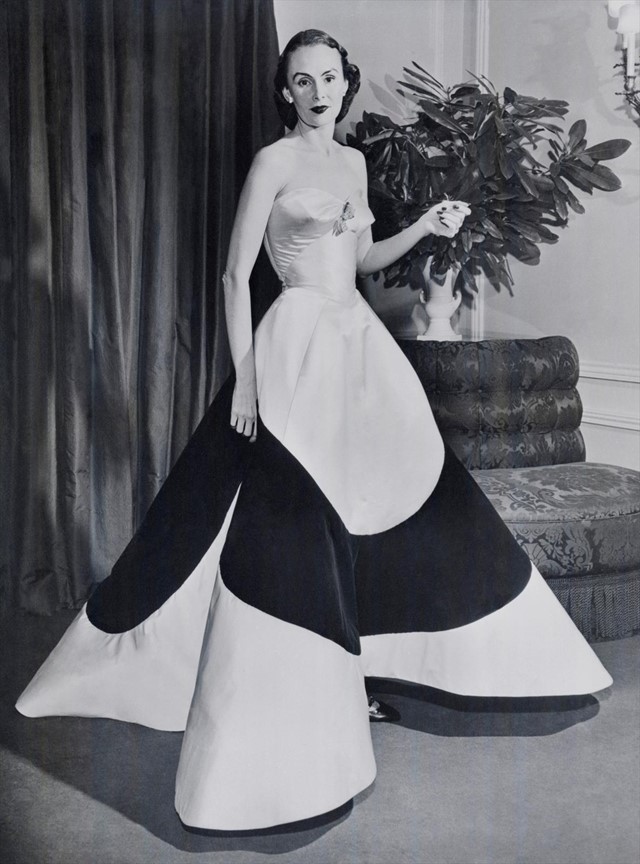
7. The Four Leaf Clover Dress
Perhaps Charles James’ greatest masterpiece, the white satin and black velvet sculpted dress spanned out like a four-leaf clover, weighing in at an extravagant 10 pounds, built on an infrastructure of mesh, boning, cotton and horsehair. For the exhibition, the Metropolitan Museum replicated the dress in order to understand its architectural arrangement.
8. The Butterfly Ballgown
Declared by James as “the highest bustline in 125 years”, The Butterfly Ballgown was debuted in 1955, modelled by Austine Hearst. It involved a tight sheath bodice unfurling into a mass of tulle bustle representative of a butterfly’s wings. In 1972, he went on to produce the Butterfly blouse, which fanned out like a butterfly when worn.
9. Resentment
James grew bitter and volatile over his lack of financial success. In many ways, his scientific devotion to couture was too ahead of its time. Indeed, it was to be repeated and rebirthed decades later by Saint Laurent and Lagerfeld, who produced A-line sheaths and engineered coats reminiscent of James’ cutwork. Beaten by his own frustration and sense of entitlement, James fell out with many of his associates, benefactors and friends, including Cecil Beaton and Diana Vreeland. He wrote a scathing 8-page letter of complaint to Beaton, to which the photographer responded, "Such a pity he is so difficult, because I would like to like him and feel he is a genius manqué."
10. Illness
James fell ill in 1978, his body weakened from drug dependency and his intense and irregular habits. He famously held an ambulance waiting outside so that he could ‘freshen up’ before being rushed to hospital, but died the following day of bronchial pneumonia and arteriosclerosis. His obituary referred to him as the 'poet laureate of American fashion.' He left behind a legacy that would carve the future of fashion, through his expertise in cutting, wild imagination, and determination to always simply do as he pleased.
Text by Mhairi Graham
